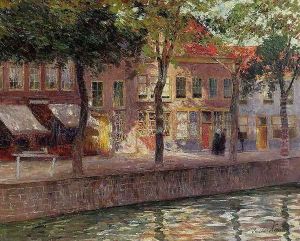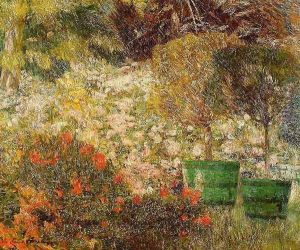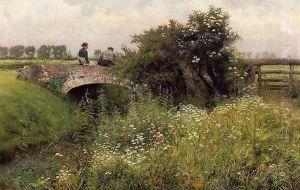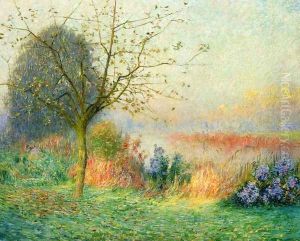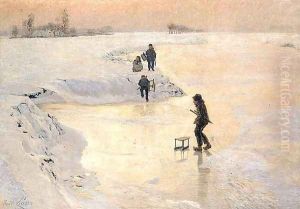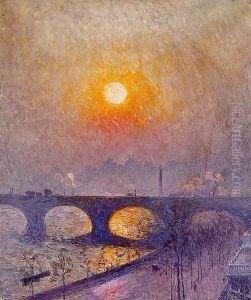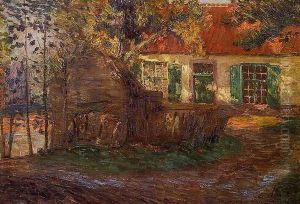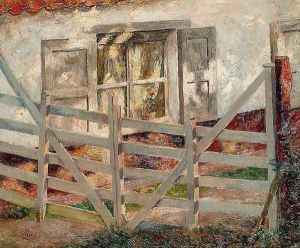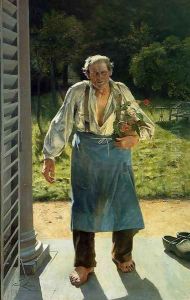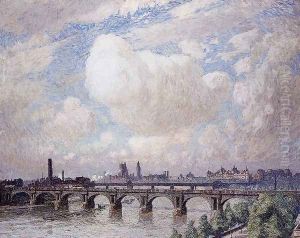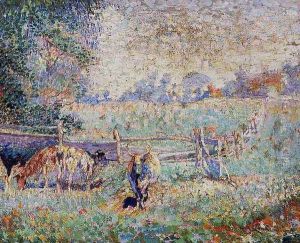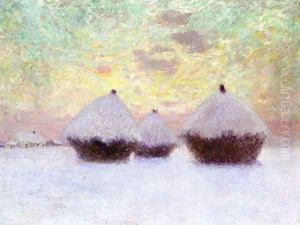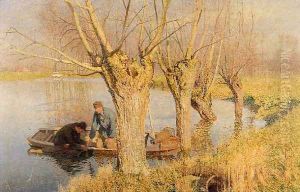Emil Claus Paintings
Emil Claus was a prominent Belgian painter, born on the 27th of December, 1849, in Sint-Joost-ten-Node, near Brussels, Belgium. Claus is often associated with the Impressionism movement, although his work also exhibits characteristics of Realism and Luminism, a variant of Impressionism that focuses on the effects of light. His early life was marked by a fascination with the natural world, a theme that would dominate his artistic career.
Educated at the Royal Academy of Fine Arts in Ghent, Claus was initially influenced by the academic teaching of his time but gradually moved towards a more light-infused style after being inspired by the works of Claude Monet and the French Impressionists. His exposure to these influences was furthered during his travels across Europe, particularly in France, where he closely studied the techniques of the Impressionist masters.
Claus is best known for his landscapes that capture the serene beauty of the Belgian countryside, especially the region along the Leie River, where he settled in the village of Astene. His work from this period is characterized by a vibrant palette, dynamic brushstrokes, and a profound understanding of light, which he used to infuse his scenes with a sense of warmth and vitality. Claus's ability to depict the changing seasons and different times of day in such a vivid manner has made his work highly praised for its technical skill and emotional depth.
In addition to landscapes, Claus also painted portraits and domestic scenes, though these are less well-known. Throughout his career, Claus remained committed to exploring the nuances of natural light, which he believed was the key to capturing the true essence of the landscape.
Claus's contributions to Belgian art were recognized during his lifetime, and he became a central figure in the artistic community. He was a mentor to many younger artists and played a significant role in promoting Impressionism in Belgium. Despite the changes in artistic trends, Claus's work remained popular, and he continued to exhibit widely, both in Belgium and internationally, until his death on the 14th of July, 1924, in Astene.
Today, Emil Claus's legacy is preserved in museums and collections around the world, where his paintings continue to be admired for their luminous quality and the artist's unique ability to capture the fleeting moments of light and color in the natural landscape. His work not only contributes to the history of Belgian art but also offers a captivating insight into the evolution of Impressionism and its adaptation in different cultural contexts.
